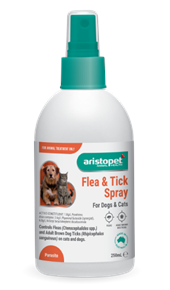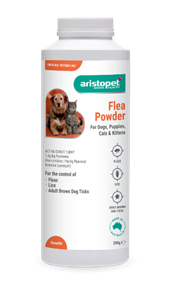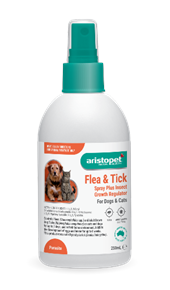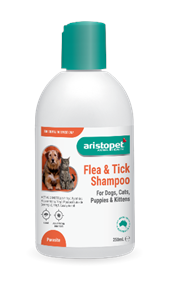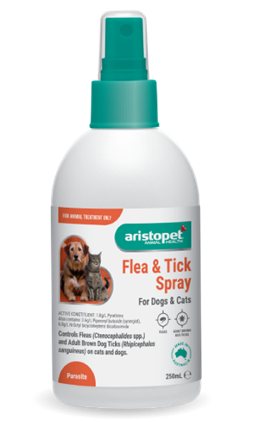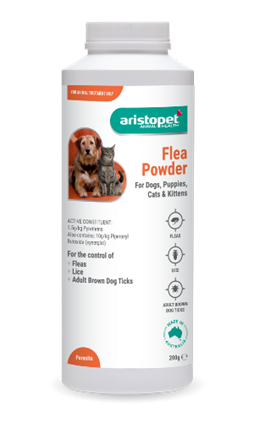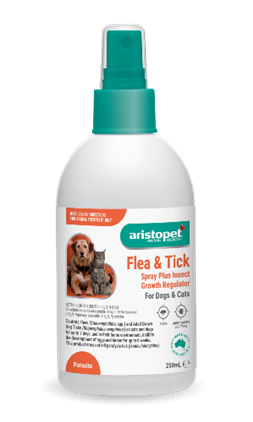Our range of cat flea treatments
Cats are full of attitude and for the most part, Aussie cat owners need to ambush their sleeping cats to treat them for fleas, ticks and worms. Cat flea treatments don’t have to be a painful, scratchy, bitey experience — we offer a wide range of cat flea treatments that are easy to administer and “acceptable” for your “prima donna” kitty.
- Spot-on flea treatments for cats — Our spot-on treatment kills fleas at all stages on your cat and in their surroundings. Plus, it prevents further reinfestation and controls flea-related dermatitis. Part the cat's hair and apply to the skin level, at the base of the neck and between shoulder blades. Remove the massage part because it is not supposed to contact the owner's skin.
- Combined flea, heartworm and worm treatments for cats — For an all-in-one solution, we recommend our flea and worm treatment! This spot-on treatment provides protection against fleas, intestinal worms, heartworms and ear mites, so you can easily treat your cat for all parasites in one go.
- Flea and tick shampoo for cats — Sometimes, you have no other choice than to wash the fleas out of your cat’s fur. In this case, we recommend our flea and tick shampoo for cats — this gentle-acting insecticidal shampoo contains natural pyrethrins to control fleas and adult brown ticks. Your cat might not appreciate the bath, but the relief will be worth it!
- Flea and tick spray for cats — If you’re looking for an easy flea and tick treatment for cats, you’ve found it. Our flea and tick spray for cats contains highly synergised natural pyrethrins to control fleas and adult brown ticks.
- Flea powder for cats — Flea powder is ideal for controlling fleas, adult brown ticks and lice in a safe and effective way. Simply sprinkle the powder over your cat, massage the powder in and shake off the excess. Plus, you can use flea powder on your cat’s bedding, their favourite cushions and sleeping spots.
- Flea and tick rinse for cats — Our flea and tick rinse help to control adult brown ticks on both cats and dogs. Made with pyrethrins extracted from chrysanthemum flowers, the natural insecticide controls fleas with a very low toxicity level to your cat. Mix one part concentrate with 100 parts warm water and swab, spray or sponge your pet with the solution until fully saturated.
Want to learn more about our products? Visit us in-store or contact us today. Our professional team would be more than happy to discuss the pet-safe ingredients and the benefits for your pet.
Why we do what we do
Since 1958, we’ve held the belief that no pet should suffer. For more than 60 years now, we’ve been creating and improving cat flea treatments alongside kitten, puppy and dog flea treatments to keep Aussie pets feeling safe, comfortable, happy and healthy.
Our formulas and treatments have been created, tested and approved by qualified Australian veterinarians, ensuring we can deliver a fast-acting, effective and gentle treatment for Aussie pets. We source our pet-safe insecticides from plants like the chrysanthemum flower, so you can rest assured knowing your cat is safe, healthy and free of fleas after a dose of our cat flea treatments.
Browse through our collection of cat flea treatments and find us in-store today!
How do I know if my cat has fleas?
There are a few telltale signs if your cat has fleas. For example, flea bites can make your cat’s skin feel very itchy, so if you see your cat scratching or biting their own skin, there’s a good chance they have fleas. However, there is a wide range of other flea symptoms you need to look out for.
- Hair loss — Cats are constant groomers so when fleas start to bite, their grooming will become extreme. Look out for hair loss and irritation on their hind legs, their neck, their ears and the base of their tail. They might be pulling hair out to relieve the itchiness!
- Agitation and restlessness — You’ll notice some behavioural changes in your cat because the fleas are driving them crazy! You might notice your cat aggressively rubbing their head and body, darting from one room to another, shaking their head and even growling.
- Red skin or scabs — Some cats are so sensitive to flea saliva that a bite can lead to red, inflamed skin and lesions. These lesions can be extremely itchy and can cause flea allergy dermatitis.
- Hairballs — If your cat has fleas, they’re bound to be grooming themselves excessively. Keep an eye out for hairballs and how often your cat is bringing them up.
- Pepper-like specks in your cat’s fur — If your cat has fleas, you’re likely to find “flea dirt” around their neck and lower back. This is actually flea feces!
- Reddish-brown insects crawling in their fur — Seeing the fleas themselves will confirm the infestation for you. They’re hard to miss — they’re reddish-brown, the size of a pinhead and run very fast. You’ll most likely find them running around on your cat’s neck, lower back, hind legs and the base of the tail.
- Muscle loss, pale gums and lethargy — If you have a kitten or a senior cat who seems very off and has pale gums, there’s a good chance they’re suffering from anemia. This can happen when your cat has a huge amount of fleas biting them and feeding on their blood.
We recommend checking your cat’s fur and skin every week so you can catch fleas before they get out of control. Plus, a monthly flea, tick and worm treatment wouldn’t go astray, either!
FAQs about flea treatments for cats
Is it normal for indoor cats to have fleas?
Fleas are one of the most common parasites on cats — outdoor cats will come across fleas on a more regular basis. Even indoor cats can be infested by fleas from their environment. We can bring fleas and their larvae into our homes through our clothes and our shoes. Fleas may even be able to jump through fly screens. With this in mind, it’s important to keep on top of cat flea treatments for the health of both you and your cat.
Can I pet my cat after treatment?
If possible, avoid petting your cat around the treated area for 24 to 48 hours after you’ve applied the treatment — more so the spot-on treatment so the liquid isn’t diluted — so the treatment can take full effect. These treatments aren’t harmful to humans — we just want your pet’s treatment to be as effective as possible.
Should I bathe my cat before treatment?
Bathing is not required before applying a cat flea treatment. However, your cat shouldn’t be bathed or be allowed to swim for 24 hours after being treated. Otherwise, the treatment might be washed off — despite the fast-drying benefit of our spot-on treatment. The same goes for our sprays and powders – leave the powder or spray to set and allow the treatment to work.
How do I tell the difference between fleas and ticks on my cat?
Fleas have six legs, are a reddish-brown colour and are roughly the size of a pinhead. Plus, they’re very easy to spot — they jump and run very fast through your cat’s fur. Ticks, on the other hand, usually feel like a small, stationary bump where the tick has attached itself to your cat’s skin. Ticks also have eight legs and move slowly, or not at all. If you suspect your cat has a tick, head straight to the vet!
How do I check for fleas?
If you suspect your cat has fleas, we recommend running a flea comb through your cat’s fur. Sit your cat down on a white sheet or pillowcase — the white fabric will help you see any fleas or flea dirt you dislodge while combing through your cat’s fur. You might see some fleas jumping away from your comb.
Make sure to check your cat’s neck, legs, lower back and belly including the exposed skin under the fur. This is where fleas love to hide.
If you haven’t spotted any fleas jumping away from your comb, you might find flea dirt in your comb. To determine if it’s actually flea dirt, wipe it off on a damp cloth — if it turns dark red, then it’s definitely flea dirt.
What else can I do to reduce the risk of fleas?
As well as treating your cat for fleas, we recommend washing your cat’s bedding on the hottest possible setting in your washing machine and vacuuming your pet’s favourite sleeping spots. You can also use our flea and tick spray to spray around the house and stop fleas in their tracks.
Can fleas go away on their own?
No! Fleas feed and reproduce on cats, dogs and other animals — they’re parasites that need blood to survive, so if they don’t have a host, they’ll simply jump to the next possible host. It’s important to treat your cat for fleas as soon as you notice them so the infestation doesn’t get worse, or spread to other animals or “hosts” in your home.
Can fleas survive without a host?
Yes. Fleas often enter the house on your pet, your shoes or your clothing and can quickly make themselves at home in the carpet, your bedding, pet bedding and upholstered furniture. Fleas and their larvae can survive in fabrics for long periods of time until they find a new host.
Find Aristopet cat flea treatments in your local pet store today! Our products are available in pet shops all over Australia.


